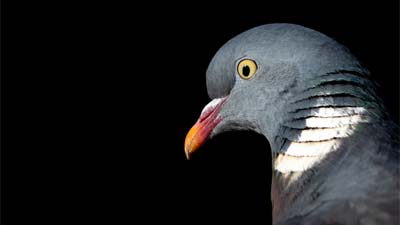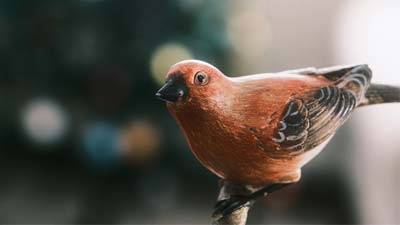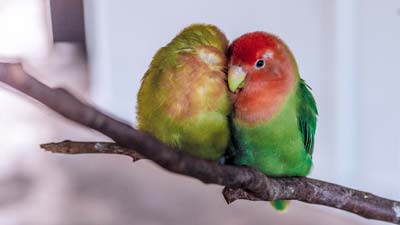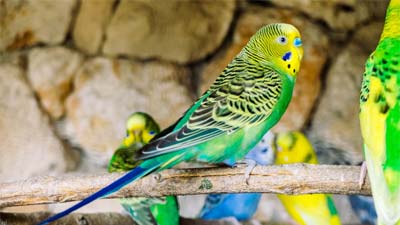- Size
- Smallest
- Small
- Small to Medium
- Medium
- Large
- Giant
- Characteristics
- Smartest
- Hypoallergenic
- Fluffy
- Best Guard
- Best Family
- Best for Kids
- Low Shedding
- Healthiest
- Police Dogs
- Most Calm
- Quietest
- Color
- White
- Black
- Grey
- Brown
- Blue
- Red
- Coat
- Hairless
- Short
- Long
- Origin
- Japan
- China
- Australia
- Germany
- Italy
- United States
- France
- Group
- Hound
- Terrier
- Herding
- Toy
- Working
- Sporting
The Lineolated Parakeet: A New Owner's Guide (What To Know)

Photo by Josh Appel on Unsplash
Lineolated Parakeets are native to Central and South America, primarily found in regions such as Mexico, Central America, and parts of South America, inhabiting forests, woodlands, and mountainous areas. European explorers and naturalists encountered Lineolated Parakeets during expeditions to the Americas in the 18th and 19th centuries. However, they weren't extensively studied or documented until later.
Lineolated Parakeets gained attention among bird enthusiasts due to their charming personalities, gentle nature, and captivating appearance. Their small size, colorful plumage, and adaptability to domestication contributed to their appeal as pets.
Today, Lineolated Parakeets continue to be popular pets among bird enthusiasts seeking affectionate and quieter parrot species. Their endearing characteristics, adaptability to domestic settings, and their ability to bond with humans make them cherished companions in many households.
Here's a guide on their care and basic information:
Basic Information
Species Traits:
Size: Lineolated Parakeets are small to medium-sized birds, typically around 7-8 inches in length.
Lifespan: With proper care, they can live for 15-20 years or more.
Variety of Colors: They come in various colors, including greens, blues, lutinos, and pied mutations.
Price:
In the USA, the price of a lineolated parakeet can vary depending on several factors such as the bird's age, color mutations, breeder reputation, and geographic location. On average, you can expect to pay anywhere from $200 to $400 or more for a lineolated parakeet from a reputable breeder or pet store. Rare mutations or birds with specific traits may be priced higher.
Care Tips
Here are some care tips specifically tailored for lineolated parakeets:
Habitat and Housing:
Cage Size: Aim for a minimum of a 24-inch square cage for a single bird, with more space for multiple birds or a larger setup. Opt for wider cages to accommodate their preference for walking horizontally.
Perches and Toys: Provide varied perches and toys to encourage physical activity and mental stimulation. Include swings, ropes, ladders, and puzzle toys to keep them engaged.
Out-of-Cage Time: Allow several hours daily for exploration outside the cage in a safe, bird-proofed area. They enjoy roaming and playing on furniture and floors.
Diet and Nutrition:
Balanced Diet: Offer a diverse diet consisting of high-quality seeds, pellets, and fresh fruits and vegetables. Limit fruits to avoid digestive issues and supplement their diet with fresh sprouts, spray millet, and calcium sources.
Hydration: Ensure access to fresh water daily and consider providing occasional baths or misting sessions for grooming.
Mental Stimulation:
Toys and Activities: Rotate toys regularly to prevent boredom. Include puzzle toys, swings, and foraging opportunities to keep them mentally stimulated.
Training Sessions: Utilize training sessions to teach simple tricks or words, fostering bonding and mental engagement.
Health and Well-being:
Nail Trimming: Regularly check and trim their nails as needed to prevent overgrowth. Provide natural perches to help naturally wear down their nails.
Bathing: Allow them to bathe by providing a shallow dish or offering gentle misting sessions with lukewarm water. Ensure they can preen and dry in a draft-free space.
Social Interaction:
Bonding Time: Spend consistent, quality time bonding with your bird to establish trust and a strong relationship. Offer treats during positive interactions.
Playtime: Allocate 3 to 4 hours of out-of-cage playtime daily for physical exercise and social interaction.
Behavioral Understanding:
Adolescent Phase: Be patient during their adolescent phase, as they might display brief aggressive behaviors. Consistent interaction and positive reinforcement help alleviate such behaviors.
Health Monitoring:
Regular Vet Visits: Schedule routine check-ups and promptly seek veterinary care if you notice any changes in behavior or health. Observation: Monitor their behavior, droppings, and overall appearance for any signs of illness or discomfort.
Comfort and Safety:
Quiet Environment: Provide a peaceful environment, especially during resting hours, as they appreciate a calm atmosphere for adequate rest.
Safety Measures: Ensure the surroundings are bird-proofed to prevent accidents or injuries during playtime.
Conclusion
The Lineolated Parakeet's journey from their native habitats in Central and South America to becoming cherished pets showcases their unique traits, adaptability, and their place as delightful companions in the world of aviculture.
Lineolated parakeets make exceptional companions for those willing to invest time and care into their well-being. Their calm nature, intelligence, and playful demeanor add vibrancy to any household. With proper care, bonding, and a nurturing environment, these endearing birds can become cherished members of the family.
You May Also Like
 Other Pets, Pet BirdsThe Dove: A New Owner's Guide (What To Know)
Other Pets, Pet BirdsThe Dove: A New Owner's Guide (What To Know) Other Pets, Pet BirdsThe Finch: A New Owner's Guide (What To Know)
Other Pets, Pet BirdsThe Finch: A New Owner's Guide (What To Know) Other Pets, Pet BirdsThe Lovebird: A New Owner's Guide (What To Know)
Other Pets, Pet BirdsThe Lovebird: A New Owner's Guide (What To Know) Other Pets, Pet BirdsThe Budgerigar: A New Owner's Guide (What To Know)
Other Pets, Pet BirdsThe Budgerigar: A New Owner's Guide (What To Know) Other Pets, Pet BirdsThe Canary: A New Owner's Guide (What To Know)
Other Pets, Pet BirdsThe Canary: A New Owner's Guide (What To Know) Other Pets, Pet Birds8 Easy-to-Care-for Pet Bird Species for Beginners
Other Pets, Pet Birds8 Easy-to-Care-for Pet Bird Species for Beginners